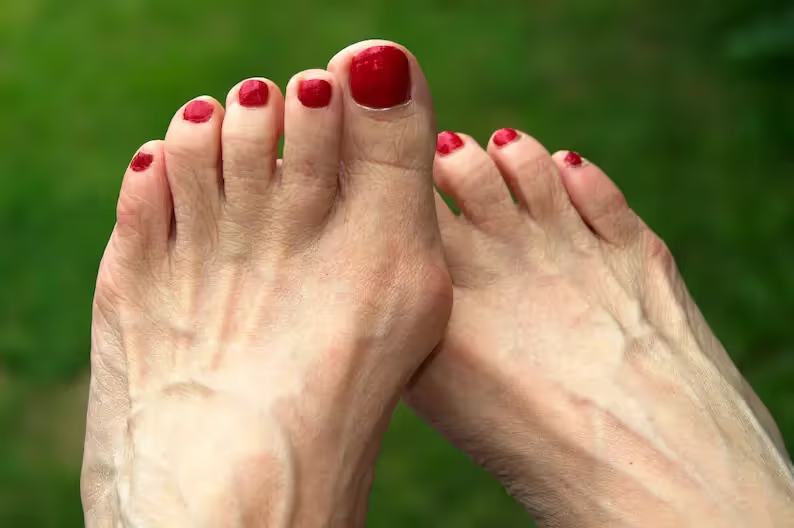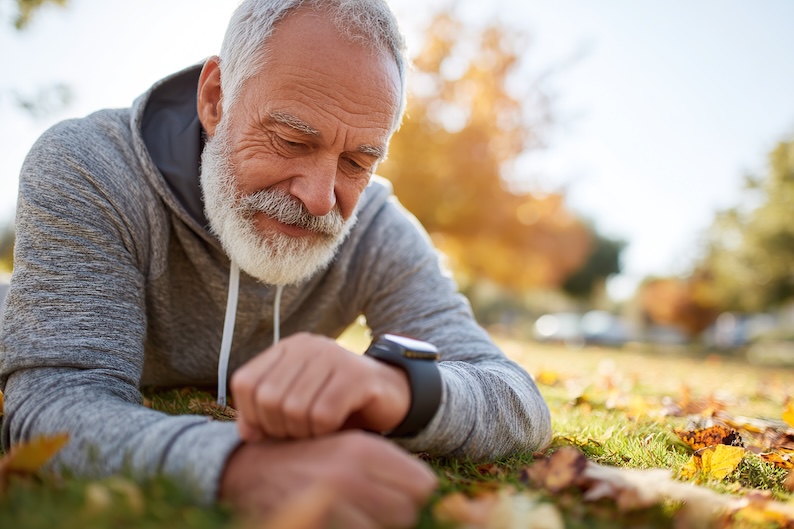Your feet change with age, just as the rest of your body does. It's no surprise, given the amount of stress and miles we place on our feet over a lifetime. One of the most common conditions affecting women and their feet is bunions. Unfortunately, years of squishing your feet into high heels and narrow, pointed-toe shoes putting pressure on your toes didn't do you any favors and only left you susceptible to painful bumps later in life. Although there is no way to rid your feet of these painful bumps, there are non-surgical ways to help ease the pain. Read on to learn more about home remedies for bunions and what causes them.
What Are Bunions?
A bunion, known medically as hallux valgus, is a bony bump on the side of the foot at the base of the big toe. The progressive bone disorder develops when the bones and muscles in your foot are out of alignment. Bunions affect more than one-third of Americans. They can be extremely painful as most shoes don't accommodate the developed bump, thus putting pressure on the misaligned joint.
What Causes Bunions?
No one knows exactly what causes bunions to develop, but many experts believe they are genetic. It's believed that some cases develop due to faulty foot structure that was inherited. There are other theories about what causes bunions, such as consistent wear and tear from tight-fitting or narrow shoes that force the big toe to lean toward the second toe, placing pressure on your joints. However, it's believed that wearing these types of shoes only exacerbates the problem and doesn't specifically create it. People with low arches, flat feet, and loose joints and tendons are at an increased risk of suffering from bunions. In addition, people in professions that require a lot of standing and walking, such as teaching and nursing, are also more susceptible to developing bunions.
Symptoms of Bunions
Bunions are typically self-diagnosable, but pain and symptoms vary in those diagnosed. Some who develop bunions never have any complications, whereas others experience severe symptoms that affect their day-to-day lives. Typical signs and symptoms of a bunion include:
- A bulging bump on the outside of the base of your big toe
- Swelling, redness, or soreness around your big toe joint
- Limited movement of your big toe
- Pain that may be ongoing or come and go when pressure is placed on the bump
- Warm and tender to the touch
- Corns and calluses between your first and second toe
Can Bunions Be Reversed?
Unfortunately, no, bunions cannot be reversed. They develop slowly over time, and once a bunion begins to form, it typically continues to grow. Fortunately, if you have a bunion that isn't causing you any pain or difficulty, you can avoid medical treatment and see at-home bunion treatment.
How to Get Rid of Bunions
If you do have pain and discomfort, you can try these home remedies for bunions before seeking outside treatment. Probably the most common symptom of bunions is swelling in the joint at the base of your big toe. Over-the-counter pain relievers like nonsteroidal anti-inflammatory drugs (NSAIDs) can help to reduce inflammation and relieve swelling and pain. Hot and cold therapies are also an excellent non-surgical option to treat bunions. Cold helps to constrict your blood vessels, which helps to alleviate swelling. In contrast, heat improves blood flow to relax sore muscles and joints. Alternating between the hot and cold therapies can help relieve pain you're experiencing. You can either soak your foot in hot or cold water or opt for ice packs and a heating pad. Wearing proper footwear will help with your bunion pain tremendously. Stick with comfortable shoes, and try to avoid heels and narrow shoes. Instead, wear shoes with support and plenty of room for your toes. There are various shoe inserts and accessories available to help with bunion pain and treatment. These include bunion correctors, splints, toe separators, and pads. These products can provide relief and support for individuals dealing with bunions. They are designed to reduce pain and promote proper alignment of the toes.
When To See The Doctor?
When home remedies and self-care no longer seem to be addressing your foot problems, consult your primary care physician. You should always seek treatment if the pain and deformity interfere with your daily routines and physical activity. Your provider will inspect your bunion and any side effects. Sometimes cortisone injections can be administered to provide temporary relief. Your provider may also refer you to a specialist for further evaluation and treatment. If you suffer from bunion pain and discomfort that is getting in the way of enjoying your life, contact a VIPcare provider today. Together, you can create the best treatment option that will provide you with relief so you can once again have a pain-free stride.




